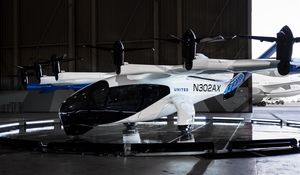Data Engineer and Non-Profit Leader Sukhbat Lkhagvadorj Unveils the Surprising Parallels Between Scalable Data Systems and Building a Legacy of Empowerment
NEW YORK, NY, NY / ACCESS Newswire / October 16, 2025 / In the world of big data, the term "infrastructure" conjures images of sprawling server farms, complex data pipelines, and multi-million dollar software platforms. Sukhbat Lkhagvadorj, a seasoned data engineer who has worked with industry giants like Uber and HBO, has built his career on this very foundation. Yet, when asked about his most impactful project, he doesn't point to a Fortune 500 company's revitalized data warehouse. Instead, he points to a dynamic, student-run non-profit organization over 6,000 miles away.
"The most robust, scalable, and rewarding infrastructure I've ever architected wasn't built with SQL or Python," says Lkhagvadorj, the co-founder and Non-Executive Chairman of the Association of Mongolian Students in America (AMSA). "It was built with vision, mentorship, and a deeply human-centric design. It's the living, breathing system that is AMSA."
This bold perspective forms the core of Lkhagvadorj's unique philosophy, one that seamlessly merges the rigorous discipline of data engineering with the compassionate mission of community building. For over a decade, he has applied the fundamental principles of his tech career in scalability, user-centric design, and sustainable architecture to cultivate an organization that has empowered over 1,500 Mongolian students on their academic and professional journeys in the United States.
From Data Pipelines to Pipelines of Opportunity
At first glance, refactoring a legacy data model for HBO Max and guiding a board of university students seem worlds apart. But for Lkhagvadorj, the core challenges are strikingly similar.
"In a corporate setting, you inherit or build a data ecosystem. Your goal is to make it reliable, efficient, and able to handle exponential growth without collapsing. You build a single source of truth so that every department, from marketing to product, is making decisions based on the same foundational data," he explains. "At AMSA, our 'legacy system' was the daunting, often isolating experience of a Mongolian student arriving in America. Our mission was to refactor that experience into one of support, connection, and clarity."
This meant building an organizational "data model" that was clean, intuitive, and served its the students. The "single source of truth" became AMSA itself: a trusted repository of knowledge on college applications, cultural adjustment, and career networking. Just as he automated manual reporting processes at HBO using Airflow, Lkhagvadorj and his team systemized the transfer of knowledge, creating repeatable programs, mentorship frameworks, and an annual summer bootcamp that scales to serve new cohorts each year.
The Principle of Scalability: Designing for Growth
In the tech world, a system that cannot scale is a system doomed to fail. When Lkhagvadorj helped modernize 21st Century Fox's tech stack, the goal was to ensure their analytics platform could handle the influx of data from new acquisitions and evolving business lines.
He applied the same foresight to AMSA. "We co-founded AMSA over ten years ago with a handful of students. If we had designed it to be a closed group, it would have died out after we graduated," Lkhagvadorj states. "Instead, we architected it for generational succession. The core leadership is, and always must be, current students. They are the users who best understand the current challenges and opportunities. My role as Non-Executive Chairman is akin to being a senior architect; I don't manage the day-to-day operations, but I ensure the overall system integrity and long-term roadmap are sound."
This focus on a student-led model is the ultimate scalability test. It ensures the organization remains relevant and agile, capable of adapting to the changing needs of each new student generation without being bottlenecked by a central, static authority.
User-Centric Design: The Most Important Interface is Human
A common failure in both technology and community organizations is building something that the creators find impressive, but the end-users find cumbersome. In his consulting work, Lkhagvadorj spent countless hours with stakeholders at Uber to understand their KPIs, ensuring the Looker dashboards he built actually solved their problems.
This ethos of empathy is central to his work with AMSA. "You cannot build for a community you don't understand. Our 'user research' is constant, organic engagement. We listen. What are the pain points for a freshman from Ulaanbaatar adjusting to life at a small liberal arts college? What does a graduate student in computer science need to land an internship in Silicon Valley? The programs we've built, from the application training to our networking events, are direct features developed in response to this user feedback."
This approach transforms the organization from a top-down charity into a responsive, community-driven platform. The value it provides is precisely the value its members are asking for, leading to organic growth and deep, lasting engagement.
Sustainable Architecture: Beyond Viral Growth
In the startup world, viral growth is glamorous, but sustainable growth is profitable. Similarly, many non-profits experience bursts of activity but lack the architectural foundation for long-term survival. Lkhagvadorj's engineering background equipped him to think in terms of sustainability.
"Sustainability isn't just about funding; it's about building resilient systems that can withstand the inevitable changes by the graduation of key leaders, shifts in the political or economic landscape, or a global pandemic," he notes. "We built AMSA's 'architecture' with redundancy and resilience. Knowledge is documented. Leadership roles are clearly defined and transitioned smoothly. The board is a team of cross-functional experts, much like a well-built software engineering team. We've created a system that is antifragile; it doesn't just withstand stress, it often becomes stronger and more innovative because of it."
A Legacy in Code and Community
For Sukhbat Lkhagvadorj, the lines between his profession and his passion have beautifully blurred. The same analytical mind that developed optimization algorithms for stock trades at NERA Economic Consulting is used to optimize the journey of a young Mongolian student dreaming of a world-class education.
"The data platforms I built for Fortune 500 companies process billions of rows of data, and that is intellectually satisfying," Lkhagvadorj concludes. "But the system we built with AMSA has processed the hopes, ambitions, and successes of thousands of students. It has launched doctors, engineers, artists, and future leaders. One infrastructure powers dashboards. The other powers dreams. When you look at it that way, the choice of my most significant project becomes incredibly clear."
About Sukhbat Lkhagvadorj:
Sukhbat Lkhagvadorj is a data engineer and analytics consultant with over eight years of experience building data infrastructure for companies like Uber and HBO. A graduate of Wesleyan University with a degree in Mathematics and Economics, he is also the co-founder and Non-Executive Chairman of the Association of Mongolian Students in America (AMSA), a non-profit organization he has helped guide for over a decade. He is a frequent speaker on the intersection of technology, leadership, and community development.
Media Contact:
Sukhbat Lkhagvadorj
https://www.linkedin.com/in/sukhbatl
sukhbatl@gmail.com
SOURCE: Sukhbat Lkhagvadorj
View the original press release on ACCESS Newswire






